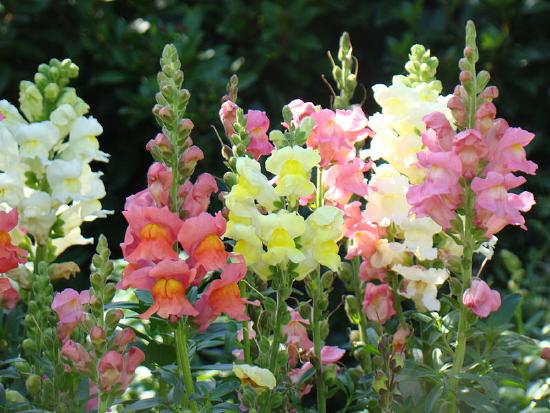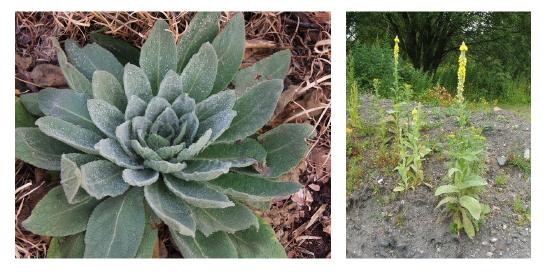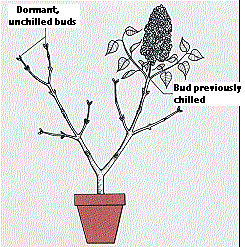4.2.2: Flowering
- Page ID
- 31999
Learning Objective
Describe the environmental conditions that induce flowering.
The flowering plants (angiosperms) go through a phase of vegetative growth producing more stems and leaves and a flowering phase where they produce the organs for sexual reproduction. In annuals the vegetative phase begins with germination of the seed. Flowering follows and ends with the senescence and death of the plant. In biennials, the vegetative phase takes up the first year; flowering followed by death occurs the second year. In perennials, flowering typically occurs year after year when conditions are appropriate (Figure \(\PageIndex{1}\))



Flowering involves the conversion of the apical meristem into a floral meristem, from which all the parts of the flower will be produced. Signals that change the fate of the apical meristem include the following:
- maturity of the plant
- temperature
- the plant hormone gibberellin
- for many plants, photoperiod (daylength; see Photoperiodism section)
Many annual plants (e.g., winter wheat) and biennial plants have their time of flowering delayed unless they have undergone a preceding period of wintertime cold. The change brought about by this prolonged exposure to the cold is called vernalization.
In Arabidopsis, vernalization involves a gene designated Flowering Locus C (FLC), which encodes a transcription factor that blocks the expression of the genes needed for flowering. Recall that one of the two DNA strands in a gene is called the sense (coding) strand and has the same sequence as the RNA transcript. The other DNA strand is called the antisense (non-coding) strand and has a sequence that is complementary to the RNA transcript. The antisense strand acts as a template during transcription. In the fall, the level of FLC mRNA is high. With the onset of cold temperatures, production of an antisense transcript of FLC (called COOLAIR) increases as does, later, a sense transcript of part of the FLC gene. Both of these transcripts are non-coding; that is, they are not translated into protein. Instead, they cooperate in suppressing the production of FLC mRNA and its translation into FLC protein. With the arrival of spring, there is no FLC protein remaining to suppress flowering so flowering can begin.
The buds of many species of woody angiosperms found in temperate climates, such as apples and lilacs, also need a preceding period of cold weather before they can develop into flowers. So these plants cannot be grown successfully at lower latitudes because the winters never get cold enough (a few days at 0–10°C). This bud dormancy is localized. Prior chilling of one bud on a lilac stem enables it to flower while the other, nonchilled, buds on the stem remain dormant (Figure \(\PageIndex{2}\)).

Figure \(\PageIndex{2}\): Vernalization (chilling) of lilac buds induces flowering, but the effect is localized. Unchilled buds on the same plant remain dormant.
Attributions
Curated and authored by Melissa Ha using 16.4D: Flowering from Biology by John. W. Kimball (licensed CC-BY)


